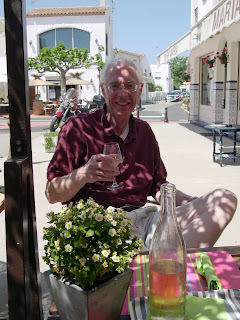The monks followed Saint Benedict’s rules, which included electing their own abbot and the renunciation of one's own will and arming oneself "with the strong and noble weapon of obedience." Their day would begin at midnight with the service, or "office", of Matins, followed by Lauds at 3 AM, Prime at 6 AM, then they gathered in Chapter to receive instructions for the day and to attend to any judicial business, then came private Mass or spiritual reading or work until Terce was said at 9 AM, then High Mass, the office of Sext and the midday meal at noon, the office of None at 3 PM, the evening prayer of Vespers at 6 PM , and, finally, Compline at 9 PM. In between services there was farming, housekeeping and other work. They were pretty busy.
What is extraordinary is that from this humble beginning, Cluny grew to become the largest, wealthiest, most powerful monastery in the world. Its church, completed in 1130 AD, was 600 feet long, with a barrel-vaulted ceiling 98 feet high and a central tower 119 feet high. It was the largest church, monastic or otherwise, until St. Peter’s in Rome was completed in the 17th century. The monastery, which managed to remain independent, answering only to the Pope, grew to 10,000 monks and controlled over 1,450 satellite abbeys and priories throughout Europe. The abbey was able to start crusades and punish offenders with excommunication. Among its abbots were Pope Urban II, Cardinal Richelieu, Cardinal Mazarin, and Armand de Bourbon (Prince de Conti). Some of the abbots commissioned the building of various edifices, including some impressive palaces. Quite a change from its humble beginnings!
Today, thanks to the religious wars of the 16th century and the French Revolution, only about a tenth of the great monastery remains. Most of the magnificent abbey was demolished for building materials in the early 19th century. Nevertheless, and thanks in part to computer generated images, one can still get an idea of its wealth and power, and also a glimpse of its amazing Romanesque architecture. And, excavations and reconstruction of some of the buildings continues. Just walking through the remains of the monastery was impressive!
 |
| The colored areas in the drawing are all that remains (the monastery at its grandest is shown in gray). |
 |
| This model will give you an idea of what the main structure once looked like. |
Here are some pictures we took as we walked through the remaining pieces of the abbey. As you can see, the grand scale of the it remains breathtaking!
 |
| Exterior of center entrance to Monastic Buildings. |
 |
| Part of the exterior of Monastic Buildings from a distance. (They are installing lights along the walk.) |
The Grand Arches (you can see part of the Abbey through the right arch).
A typical street scene.
Walking through what remains of the abbey and through this quiet, quaint little village, we found it hard to envision this as once being one of the most powerful spritual and political centers in the world. Maybe there's a lesson for us all there.























































